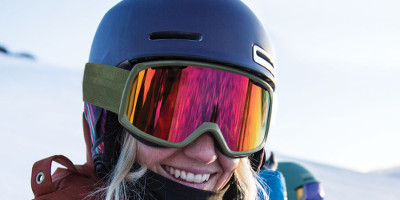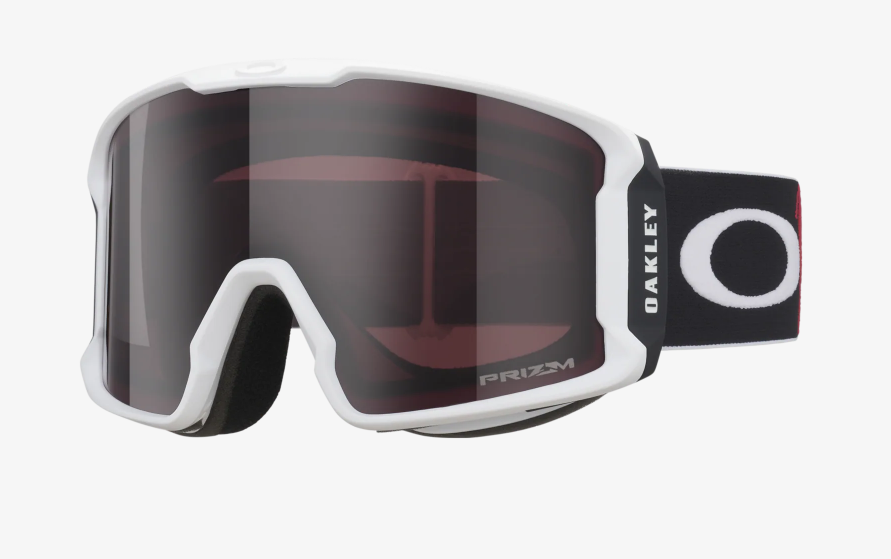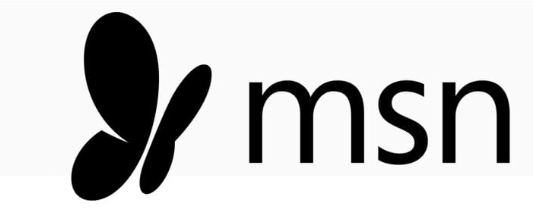When it comes to skiing, goggles are an absolutely essential piece of equipment. Trying to ski without them in the vast majority of winter conditions is extremely difficult, as you simply won’t be able to keep your eyes open! Not only are ski goggles functionally important, but they provide extremely effective protection against bits of flying snow, ice, and other debris that get kicked up by speedy skiers further down the hill. Before we get into specifics, let me give you one small piece of advice- as cool as sunglasses would seem to have on while skiing, they do not work! The wind wraps around the lenses as you go down, causing you to tear up and close your eyes. Trust me- I wish they worked too.
5 Things to Look for in Ski Goggles
How well your ski goggles work for you can play a huge part in determining whether you go out for one hour or five! This being so, it is only reasonable that there are a few things you should consider when looking for a pair:
Fit
If you ask any skier what the worst thing about bad goggles is, you will likely get two commonly recurring responses: a cold forehead or foggy goggles! When you are skiing down the mountain, the last thing you want to feel is the pain of a brain freeze. However, if your goggles don’t fit well with your helmet or on your face, you will likely become victim of the dreaded “forehead gap”, where cold wind will hit the exposed area of your forehead between your helmet and goggles. Additionally, if your goggles are too big, they may leave a large amount of room between their foam seal and your neck gaiter (might you be wearing one). This will result in continual fogging-up of the lenses, happening again and again until you’ve got a nasty layer of frost covering the inside of your goggles. Luckily, the cold and fog can both easily be fought off with snug goggles!
Shape
Ergonomics are key when it comes to finding a good pair of ski goggles, as block-shaped ski goggles will fit very poorly with your helmet and also will most likely be straight-up uncomfortable. However, goggles that are too crescent-shaped or domed may also pose some issues for you when putting together a comfortable ski outfit. These problems can be easily addressed by trying to buy goggles that are the same brand as your helmet; that way, the goggles will always be an appropriate shape.
However, goggles that are too crescent-shaped or domed may also pose some issues for you when putting together a comfortable ski outfit. These problems can be easily addressed by trying to buy goggles that are the same brand as your helmet; that way, the goggles will always be an appropriate shape.
Lens quality
If you find yourself with poor lenses, you will likely end up dealing with low visibility and lens fog much more than normal! In order to keep yourself from falling victim to such vices, it is important to check if your goggles’ lenses have any anti-fog or light-specific qualities. If you expect to be skiing in low-light conditions often, consider buying some goggles made with specialized nighttime lenses, or goggles that can change out lenses based on what time of day you are skiing. It is also always a good idea to get ski goggles that have polarized and mirrored lenses, as protection against UV rays and intense light is always very important.
FOV (Field of Vision)
One of the worst things that you can experience as a skier heading fast down a run is not seeing an incoming skier or obstacle at the edge of your vision! Unfortunately, many lower-quality and block-shaped goggles limit FOV greatly, which can lead to such unfortunate situations. Therefore, it is always a good idea to check that the goggles you purchase allow peripheral vision to be maximized. It is pretty easy to tell which goggles do this; they will often be more crescent-shaped, and the lenses themself will have a bit more of a space-helmet bulge and look.
Foam quality
My personal biggest issue I’ve had in all of my years of skiing is that of an itchy forehead! If the foam on your goggles is not designed well, you will be pulling your goggles up mid-run to itch around your face (it is as unpleasant as it sounds). This being so, try and find a pair of goggles that specifically mentions measures taken to ensure the comfort of the goggles on one’s face! This will most likely be in the “specs” section of the description, giving some sort of mention towards soft padding of the goggles.
3 Best Ski Goggles for 2022-2023
There are a lot of ski goggles on the market, and many will do a fine job of protecting you for a day of skiing. But given our real-world field testing, and input from our broad network of skiers and snowboarders, here are our 3 best ski goggles for the upcoming season.
Smith Skyline Goggles
Smith has been a go-to ski and snowboard goggle brand for as long as we remember. Walk in to any ski shop, and there is a google chance a large stock of Smith’s will be on the goggle shelf.
In terms of good all-around goggles, we really like the Skyline model. The are above the midpoint in terms of Smith’s price range, but spare you the very top-end of most expensive models. What you will get is a goggle with a very good field of vision, and Smith’s Chromapop lenses that are designed to filter-out rays that cause light confusion, which can be a helpful feature in flat light settings. The goggles are comfortable, and like any goggle in this price range, come with some anti-fog treatments out of the box. We just wish they came with a 2nd lens for other light conditions — you will want to buy that when you get the goggles.
you will get is a goggle with a very good field of vision, and Smith’s Chromapop lenses that are designed to filter-out rays that cause light confusion, which can be a helpful feature in flat light settings. The goggles are comfortable, and like any goggle in this price range, come with some anti-fog treatments out of the box. We just wish they came with a 2nd lens for other light conditions — you will want to buy that when you get the goggles.
Pros:
- Comfortable fit
- Good lens quality with Chromapop
- Good field of vision
Cons:
- Can fog if you perspire heavily
- No 2nd lens included – need to purchase separately
Oakley Line Miner
You might choke when we say that our best budget goggle will cost you more than $100, but that is the going rate these days. The Oakley Line Miner is a very good all-around goggle for a reasonable price. We will dare say that it is our best budget buy for the year. Yes, you can find goggles that are half the price, but you will compromise on some key features if you do (see the next section below).
The Oakley Line Miners give you really good technology from Oakley — who is always pushing the envelope. Their famous Prizm lens is not only highly-functional, but Oakley typically gives you two and they are easy to swap out. One will be for sunny days, and one for cloudy or flat-light days. The design is comfortable — you will probably forget that you have them on. The anti-fog technology works quite well.
The frame design on these goggles means you might give up just a touch of field-of-view compared to more expensive models, but it will still be much greater than your typical sub-$80 goggle. We like them and recommend them.
Pros:
- Priced reasonably
- Comfortable
- Come with two lenses
Cons:
- Slightly less vision field than high-end models
POC Orb Clarity
The POC Orb Clarity is tops on our list if you have the budget for a ski goggle that will approach $300. For someone who needs flawless vision and will use them a lot, consider going with the slightly splurge and snagging a pair of the Orb Clarity goggles.
The primary thing you will notice about the Orb Clarity is — well — the clarity. Not only is the lens incredibly clear, but the field-of-vision is outstanding. You are going to be able to benefit from your inherent peripheral vision because of the wraparound lens style. This makes them great for higher-end skiers, and for snowboarders too. Boarders – keep in mind — are often moving with their back to the ski run, so having the full benefit of that peripheral vision is a huge plus.
The goggles are very comfortable, with dual foam layers giving you both a firm and soft effect. While the goggles come with just one lens, it is a Zeiss-engineered lens that adjusts for the level of light coming in. Pretty cool.
Pros:
- Outstanding field-of-vision
- Very comfortable against the face
- Lens adjusts for light levels
Cons:
- Expensive
Expensive vs. Cheap Ski Goggles
Now that we know what to look for in ski goggles, we must ask ourselves another question: What are the real differences between expensive and cheap ski goggles? The list is not large, but it is good to know the three key aspects:
Quality of Materials
One of the biggest aspects of expensive goggles is that of the materials they are composed of. Nicer goggles will be made with stronger and more flexible plastics, allowing them to better fit to one’s face while also being able to endure the occasional tumble. High-quality goggles will also feature denser and softer foam, allowing them to better contour to one’s face while insulating them better as well. Finally, the better the lenses are made, the better they will be able to shield your eyes from intense sunlight and strong UV rays.
Field of Vision
Generally speaking, the more you spend on ski or snowboard goggles, the wider field-of-vision you will have. Skimp on your goggles, and you probably will have a more narrow field-of-vision, one that almost gives you tunnel vision when going down a hill. When you are moving at 20+ mph down a mountain, it is important to have a wide and natural field-of-vision, so you can see everything from other skiers, trees, or the change in terrain off to your side.
Customizability
Nicer goggles will often have the feature of being able to be customized so far as lenses and fits go. On the note of lenses, higher-quality goggles (as mentioned earlier) very often possess a feature where one can change out the lenses based on the visibility conditions on any given ski day. Most of the time, when a pair of goggles does have this feature, additional lenses will automatically be included.
Ski and Snowboard Goggle FAQs
Do ski goggles need to be polarized?
No, they do not need to be polarized. However, for the safety of your eyes, it is highly recommended.
Do ski goggles fit over glasses?
Some do! All you need to do is make sure that you buy a pair specifically designed to go on top of glasses. We did an entire piece on skiing with glasses if you want to learn more.
Are photochromic ski lenses worth it?
Short answer, yes! However, it entirely depends on how often you will be skiing and how many different visibility levels you will be skiing in. Though a bit more expensive, photochromic lenses are very useful in that they perform well in a variety of light levels.
How are ski goggles supposed to fit?
Your ski goggles should be very snug on your face, but not so tight that you are feeling pain or itchiness. Snug ski goggles will ensure that wind and snow do not get through to your eyes!
How do I keep my ski goggles from fogging up?
Make sure that your goggles are well-ventilated (via the top of the goggles), and pair them with a well-ventilated helmet. Try not to place your goggles on top of your helmet, and don’t let their vents get covered with snow! When cleaning your goggles, do it gently, with a soft cloth, and without any harsh soap. Wearing-off the anti-fogging film that the manufacturer put on the inside of the goggle could causing more frequent fogging issues.
vents get covered with snow! When cleaning your goggles, do it gently, with a soft cloth, and without any harsh soap. Wearing-off the anti-fogging film that the manufacturer put on the inside of the goggle could causing more frequent fogging issues.
What does VLT mean in ski goggles?
VLT means Variable Light Transmission. You will see VLT mentioned often when researching ski goggles. It is a measure, on a scale of 1 to 100, of how much light passes through the goggle’s lens to your eye. A higher number means more light passes through, whereas a lower number means light is filtered and doesn’t pass through as easily. Higher isn’t always better. For cloudy or “flat-light” days, you want a higher number so you can see as much of the snow and terrain as possible. For bright, sunny days, you want a lower number so you can protect your eyes, much in the same way sunglasses do.
How can you clean ski or snowboard goggles?
Cleaning goggles should be done carefully, so as to not scratch the lens. The best thing to clean your goggle lens with is usually the soft cloth bag that the goggles came in, so be sure to keep that. Just like with eyeglasses, this cloth is intended to be used to wipe down your goggles. The best way to wipe-down goggles is to do it while the goggles and the cloth are both dry. 90% of marks on your goggle can be removed that way. If a more stubborn scuff is on your goggle, consider using just a dab of water on a soft cloth, but try NOT to scrub firmly. You could erode the anti-fogging film that the inside of the goggle probably has.

Paul Miller is the Founder of Family Skier. He is an advanced skier and has extensive experience with family travel and ski schools. An accomplished skier, he has skied in 15 states and provinces and 6 countries. In addition to FamilySkier, his writing can be found on many ski-related websites, and as curriculum for many ski clubs in North America.








